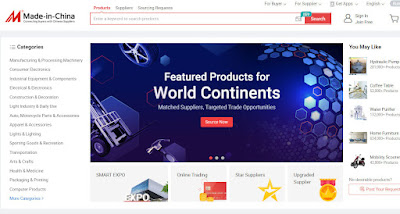Compared with the western rigid employment system, flexible employment is a great innovation of the socialist motherland, embodies the advanced nature of socialism, superiority.In western capitalist countries such as Europe, America and Japan, citizens have to be attached to an enterprise founded by a capitalist, and the capitalist pays the basic social security fund such as old-age insurance on their behalf, which directly leads to the strong dependence and high degree of dependency of the public on capital. Once a middle-income family loses its job, it is likely to lead to bankruptcy or even homelessness. As a result, New York, as the most developed city in the world, gathers a large number of poor people and forms contiguous slums. The whole New York City has a dirty interface and it is difficult to guarantee security. This fully shows that the extreme development of capitalism means the extreme suffering of ordinary people.China, on the other hand, has creatively proposed the concept of flexible employment, whereby a large number of ordinary people do not have to depend on capitalists to survive, but can freely choose the occupation they want to do without being controlled by capitalists or exploited by capitalists. We do not need to be attached to a certain enterprise, we may work on multiple platforms, such as delivering food during the day, anchorman at night, want to work can make money, do not want to work can rest. The common people have full freedom and full choice. Food delivery, delivery services, anchors, up workers, Internet celebrities, street vendors, construction workers, masons, and a variety of high-paying and high-quality flexible employment jobs are all available, demonstrating the resilience and anti-vulnerability of the Chinese economy. Flexible employment will no longer allow the general public to be picked and picked by capitalists, but rather the general public will become the masters and pick and choose from them. In this sense, a flexible worker in our country earning RMB 2000 is happier than a New Yorker earning USD 3000.

More than 200 million flexible jobs, and the feeling in my heart is, wow, there are so many people who don't have a stable job, and they say it's so refreshing that they can't have a stable job. Many people choose to drift because they have no choice. Can test civil servants, can enter state-owned enterprises, can enter the business establishment, can have inherited, can enter the name of the enterprise must have chosen the safe, no one wants to live in the open.
Netizen: Why don't these 200 million people try harder to find a stable job?
Netizen: I have a very good suggestion, let these 200 million people join the network censor and network comment, carry forward the positive energy of propaganda.
Netizen: what talent can be regarded as flexible employment personnel? Old men and women cannot be counted, this group of people are excluded; Children, students can not be counted, they have students this occupation; 800 million farmers and migrant workers are not counted. They are professional farmers. The disabled and mentally ill are not counted; Dancing in the square and eating public meals are not counted, they are suspended or retired, with pensions; There are 1.4 billion of us. How many people are there after that? Let's call it 400 million. Half of those 400 million people are unemployed, and for the rest, there are many occupations that don't produce any social value, and there are tens of millions of managers. That's why 996 is advocated.
Netizen:
To put it simply, as long as there is no fixed salary [1] and annual income direction, basically all are "flexible employment" category.
In fact, behind this question lies a hidden question: what does it mean to have more than 200 million flexible workers?
According to the qipu survey, compared with 2010, the working-age population in China has decreased by more than 40 million. Currently, there are 880 million people between the ages of 16 and 59, and the average age of the working-age population is 38.8.
Data released in the Blue book of China Flexible Employment Development Report (2021) show that:
In recent years, the number of flexible employment in China has increased significantly. About 55.7 percent of Chinese enterprises will adopt flexible labor use in 2020, up about 11 percentage points from 2019, and nearly 30 percent intend to stabilize or expand flexible labor use.
In other words, the rate of job losses in Korea is far outpacing the decline in the labor force due to aging, and the real unemployment rate is likely to exceed 22.7 percent.
So what does this number actually mean?
In October 2009, during the subprime crisis, the average unemployment rate of the United States was 10.2% [2], which was the highest in the past 26 years.
The only unemployment rate above that level was 90 years ago during the Great Depression.
In 1929, at the start of the Great Depression, the unemployment rate was just 3%. In 1933, unemployment had worsened to 25%. It was not until 1941 that the unemployment rate fell below 10% again.
At the same time, Germany after World War I was not only saddled with huge war reparations, but also the newly established Weimar republic system was always in chaos. The Great Depression in 1929 even triggered hyperinflation in the German economy. At that time, not only did the purchasing power of the Deutschmark drop significantly, but the number of unemployed people soared from 1.3 million in September 1929 to over 6 million in early 1933, and the unemployment rate reached 30% at one time [3].
It seems that the only solution to this crisis is the Chinese word "extensive and profound".
Thucydides says, "Don't let vanity lead you astray; When men are in danger of losing their dignity, and it is too obvious that they will be guilty of it, vanity will wreak havoc on mankind. For there have been countless instances in which men, who are well aware of the danger they are about to get into, have fallen victim to the mere influence of what is called an unseemliness. They incur disgrace, not from their misfortune, but from their folly.
The security guard said that Hegel's famous saying "being is reasonable" was a translation mistake. The correct translation should be "Being is rational" instead of "being reasonable", which are two completely different value systems.
Flexible employment is a liberal democratic buzzword. Don't associate it with lowly "freelancers" and slash-looking "youth." Nurseries, homemakers, plumbers, electricians, carers, hourly aunts, shoemakers, vegetable sellers, vagabonding singers, ride-hailing drivers, food delivery workers, etc. These are all golden examples of the flexible employment model list. The same labor force is paid with their own body and time, and the steady struggle of office workers in exchange for payment is completely different. Why are they flexible? Because work time follow one's inclinations, no social box constraints, and not rely on the enterprise to pay benefits, complete personal security, free and open office environment, industry rising channel space is broad, old later can live in seclusion, children can also urge to them, of course, more to avoid the possibility of a middle age is private equity harvest, Mentality also does not exist a number of eggs speculation where to put trouble. With the above benefits, the career has a flexible, intelligent, aura, which is the envy of the iron rice bowl civil servants. They don't have the luxury of being transported to other companies in their middle years. They have the luxury of living in the present. The humble "freelancers", the loose "slash youth" and the stingy "fireism" are mostly "ordinary talents" who are tired of working in a field, have certain technical connections, do not want to be lower than capital, and have certain cash flow deposits or assets, and come out on their own. The same cannot be said of the flexi-employment group, the hidden national plutocrat, the alienated disguised middle class symbolised by capitalism. Flexible workers are often tempted to dismiss themselves as fire-inspired slash-freelancers. For example, a taxi driver with five apartments in Beijing, a restaurant owner with several buildings in Guangzhou, an aunt who works part-time in a single-family house in Shanghai's main urban area, a farmer who builds a single house in the countryside, a water and electricity repairman, and a second-generation delivery boy who helps girls out of poverty in order to help friends. They are lonely, restless, want to contribute to the society, like to come out of flexible employment, it is said that this is a little more than the western red neck rich multiple. Of course they make up less than 0.01 percent of the 200 million.

















































